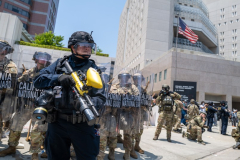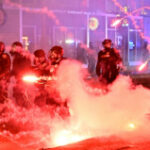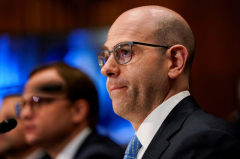This article is part of TPM Cafe, TPM’s home for opinion and news analysis. It was originally published at The Conversation.
Responding to street protests in Los Angeles against federal immigration enforcement raids, President Donald Trump ordered 2,000 soldiers from the California National Guard into the city on June 7, 2025, to protect agents carrying out the raids. Trump also authorized the Pentagon to dispatch regular U.S. troops “as necessary” to support the California National Guard.
The president’s orders did not specify rules of engagement about when and how force could be used. California Gov. Gavin Newsom, who did not request the National Guard and asserted it was not needed, criticized the president’s decision as “inflammatory” and warned it “will only escalate tensions.”
I am a historian who has written several books about the Vietnam War, one of the most divisive episodes in our nation’s past. My recent book, “Kent State: An American Tragedy,” examines a historic clash on May 4, 1970, between anti-war protesters and National Guard troops at Kent State University in Ohio.
The confrontation escalated into violence: troops opened fire on the demonstrators, killing four students and wounding nine others, including one who was paralyzed for life.
In my view, dispatching California National Guard troops against civilian protesters in Los Angeles chillingly echoes decisions and actions that led to the tragic Kent State shooting. Some active-duty units, as well as National Guard troops, are better prepared today than in 1970 to respond to riots and violent protests – but the vast majority of their training and their primary mission remains to fight, to kill, and to win wars.
Federalizing the Guard
The National Guard is a force of state militias under the command of governors. It can be federalized by the president during times of national emergency, or for deployment on combat missions overseas. Guardsmen train for one weekend per month and two weeks every summer.
Typically, the Guard has been deployed to deal with natural disasters and support local police responses to urban unrest. Examples include riots in Detroit in 1967, Washington DC in 1968, Los Angeles in 1965 and 1992, and Minneapolis and other cities in 2020 after the death of George Floyd.
Presidents rarely deploy National Guard troops without state governors’ consent. The main modern exceptions occurred in the 1950s and 1960s during the Civil Rights Movement, when Southern governors defied federal court orders to desegregate schools in Arkansas, Mississippi and Alabama. In each case, the federal government sent troops to protect Black students from crowds of white protesters.
The 1807 Insurrection Act grants presidents authority to use active-duty troops or National Guard forces to restore order within the United States. President Trump did not invoke the Insurrection Act. Instead, he relied on Section 12406 of Title 10 of the U.S. Code, a narrower federal statute that allows the president to mobilize the National Guard in situations including “rebellion or danger of a rebellion against the authority of the Government of the United States.”
Trump did not limit his order to Los Angeles. He authorized armed forces to protect immigration enforcement operations at any “locations where protests against these functions are occurring or are likely to occur.”
The standoff at Kent State
The war in Vietnam had grown increasingly unpopular by early 1970, but protests intensified on April 30 when President Richard Nixon authorized expanding the conflict into Cambodia. At Kent State, after a noontime anti-war rally on campus on May 1, alcohol-fueled students harassed passing motorists in town and smashed storefront windows that night. On May 2, anti-war protesters set fire to the building where military officers trained Kent State students enrolled in the armed forces’ Reserve Officer Training Corps program.
In response, Republican Governor Jim Rhodes dispatched National Guard troops, against the advice of university and many local officials, who understood the mood in the town of Kent and on campus far better than Rhodes did. County prosecutor Ron Kane had vehemently warned Rhodes that deploying the National Guard could spark conflict and lead to fatalities.
Nonetheless, Rhodes – who was trailing in an impending Republican primary for a U.S. Senate seat – struck the pose of a take-charge leader who wasn’t going to be pushed around by a long-haired rabble. “We’re going to put a stop to this!” he shouted, pounding the table at a press conference in Kent on May 3.
Hundreds of National Guard troops were deployed across town and on campus. University officials announced that further rallies were banned. Nonetheless, on May 4, some 2,000 to 3,000 students gathered on the campus Commons for another anti-war rally. They were met by 96 National Guardsmen, led by eight officers.
There was confrontation in the air as student anger over Nixon’s expansion of the war blended with resentment over the Guard’s presence. Protesters chanted antiwar slogans, shouted epith





